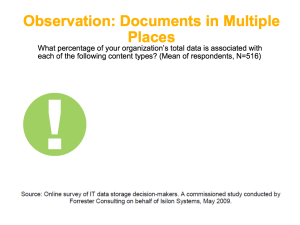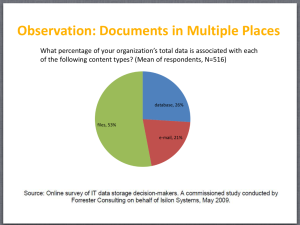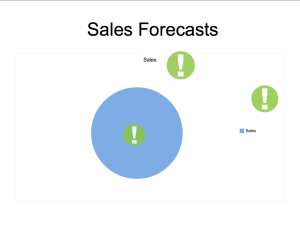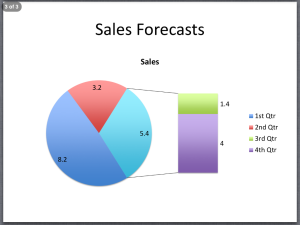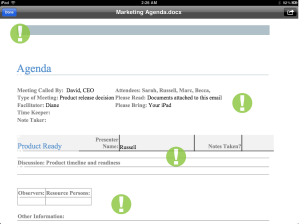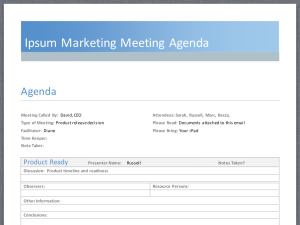Archive for the ‘Apple’ Category
With the iPad Mini, My Computation Needs Fit in My Pocket
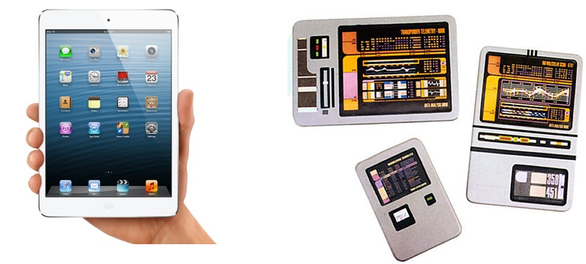
The iPad Mini is here and, like all great technology, it rivals tablets we’ve seen on Star Trek in dimensions, weight, and functionality! Coaxion users will be happy to know Coaxion runs fantastically on the device and allows you to stay up to date with meeting documents and colleagues. The $329 price point for the WiFi device is higher than a comparable Kindle Fire HD at $199 but for the enterprise, you are buying into the iPad ecosystem - your enterprise tools, apps, and management systems will run fine on the iPad and iPad mini.
The iPad Mini fits nicely into a jacket pocket - rain, winter, or executive jacket. Actually, my phone, tablet, and charging cables all fit into a Seattle winter jacket pocket, eliminating the need for a laptop bag and all its bulk. The WiFi only iPad mini easily connects to a hotspot from my iphone, eliminating the need for multiple data plans and cables between the devices.
Multitasking takes on new dimensions when performing major tasks on the iPad Mini and using the iPhone for quick reference of contacts, other apps, or the web. iCloud makes it easy to get notes, URLs, and files synchronized between the two devices for incorporation into the main task on your iPad Mini. Multitasking on a phone & tablet allows us to do things that are hard even on big screen desktops. For instance, I was easily able to bring up a complex bank web form on the iPad mini while using the phone to look up relevant data from other websites, files, contact lists, and email to make an international wire transfer. All those look-ups and app navigations would have been difficult on a laptop but the single task nature of the phone and automatic synchronization of notes between devices made this easy. Multi-monitor desktops give way to multiple pocketable devices.
Apple’s Q3 2012 Earnings and the Enterprise
Apple announced their Q3 2012 earnings today with the highlights being 17M iPads sold (up 84%) and their $2.65 dividend per share.
But as usual, the enterprise is what matters to us…
26M iPhones were sold (up 28% y/y) with the number of iPhones in the Fortune 500 more than doubling.
Two examples were sited -
1) Pepsi Co has deployed thousands of iPhones with an in-house app for their field service personal to eliminate paper and provide real time sales and delivery information.
2) ERGO, a German insurance provider, has an in-house app to process insurance claims to eliminate paper and speed processing time.
17M iPads were sold (up 84% y/y) and the number of iPads in the Fortune 500 mre than tripled in the past year. Additionally the reduced price iPad2 saw large momentum in K-12 school districts with nearly 1M iPads sold.
Three examples were sited -
1) British Airways has a custom app to support their business across customer support at check-in to cabin service directors replacing paper printouts of customer preferences.
2) Homebuilder Dialogue House in Japan is building smart homes that are fully controlled by iPads. And their sales collateral is distributed via iPads to enable purchasers to select upgrades and other options.
3) Mansfield, Texas Independent School District has purchased 11,000 iPads. This fall every Mansfield High School student and teacher will receive an iPad under the districts Power Up initiative.
A cumulative 410M iOS devices have been sold making a large market for the Apple Developer community.
Overall, paperless workflow plays a huge role with iOS in the enterprise. At Moprise, we believe document workflow applications like Coaxion can give you the efficiencies experienced by these companies at price points, speed, and flexibility unattainability with custom solutions.
AppleTV and Wireless Presentations
We use Apple’s AirPlay to display slide decks, videos, and documents on our conference room projector using Coaxion and our iPads. And with the imminent release of OS X Mountain Lion for the Mac, we will be able to do the same using our Macs.
We’re huge fans of Apple TV and we think they will be indispensable in every conference room and public presentation setting for easy display & sharing of PC content. Finding the right connector and synchronizing up with wired projectors often wastes 10 to 15 minutes of presentation time getting the laptop and projector working.
In this Forbes article, Marc Tobias says AppleTV is the best tool for delivering live wireless video presentations and describes how he connects a camera and iPad to his AppleTV for presentations on the go.
Update: Today (July 24, 2012) Apple announced they shipped 1.3M Apple TVs in Q3 2012 (up 170% y/y) for a total of 4M so far this fiscal year. Maybe one day, we will be able to walk into any conference room and give a wireless presentation…
Video: Coaxion makes reading business documents easy with automatic PDF conversion
Reading business documents on an iPad is very difficult especially if you use Microsoft Office formats. In a previous post, before and after bitmaps were shown of Microsoft Office documents viewed using the built in iOS 5.1 viewer versus Coaxion’s automatic PDF conversion. Here is a video of Coaxion accessing files from SharePoint and Box, doing background PDF conversion, and showing you the resulting pixel perfect PDF documents.
This video gives a sneak peek at a new, simpler user interface for Coaxion but you can get PDF conversion in the current Coaxion in the App Store.
Automatic rendering of Microsoft Office documents as PDF on iPad
Corporations often use Microsoft Office document formats but most iPad applications display these formats incorrectly. If users were unaware, business decisions could be delayed or made without all the facts.
To see this first hand, here are some sample documents as viewed within email on an iPad compared to the same documents viewed within Coaxion. This is a collection of slides in PowerPoint and pages in Word. The email display is on the left while Coaxion is on the right. The green exclamation mark was added to help surface the differences. You can click on any image to make it larger.
Even a casual examination of the documents shows how much easier it will be to hold paperless meetings using Coaxion over email - especially since you can forward your email with attachments to [email protected] for instant paperless meetings on Coaxion.
Some things that go missing include: Images, Headers, Footnotes, Charts, Axis, Watermarkers, and Formatting. This means you will miss important data like your sales projections or key details on a contact.
Here are some sample pages when viewing native Office formats in email vs Coaxion. The green ! indicates missing graphics and incorrect formatting in the documents viewed before PDF conversion.
As viewed in email or a typical iPad PDF reader: As viewed in Coaxion for iPad:
Coaxion + BOX is your solution to paperless iPad Meetings
A company revolves around two things: email & storage. One of the storage systems many customers had in common was BOX. Everywhere we turned, customers, departments, or entire corporations were already using or 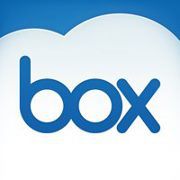 beginning to use BOX in addition to internal, behind the firewall systems like SharePoint. And they needed a mobile solution that could bridge these storage systems. It made perfect sense to integrate BOX into the latest Coaxion, now available in the App Store.
beginning to use BOX in addition to internal, behind the firewall systems like SharePoint. And they needed a mobile solution that could bridge these storage systems. It made perfect sense to integrate BOX into the latest Coaxion, now available in the App Store.
In the past, we’ve written about the “scattered document” problem. This problem can increase in scope when a new storage system comes online and documents are copied between the two systems to remain accessible to everyone. This results in chaotic business workflow, inadequate compliance checking, accidental use of outdated documents, and leakage of corporate IP.
To facilitate paperless meetings and prevent document duplication, Coaxion can now access your BOX documents for secure sharing and synchronization across iPhones & iPads. If you use SharePoint only mobile clients like SharePlus or Moprise or BOX’s iPad client, your teams will copy documents between the storage systems to keep them accessible. With Coaxion, you can leave your documents on one storage system and temporarily share them with your colleagues through Coaxion discussions. And when the meeting is over, close the discussion and Coaxion will remove the documents from all the devices, leaving the truth on the correct server.
Our Box support within Coaxion also enables offline storage, editing and upload back to the BOX server.
As seen in the Apple @ Work section of iTunes, Coaxion + BOX is your solution to paperless iPad meetings. Contact us if you want more information on enterprise features to use Coaxion for a paperless boardroom or for your paperless sales portal.
Apple’s Q1 FY12 Earnings
37M iPhones sold (up 128%), 15.4M iPads (up 111%), 5.2M Macs (up 26%). 85M users iCloud
$46B in revenue, $13B in earnings
Apple announced their earnings on Tuesday and their numbers blew everyone away. And Apple’s Enterprise penetration is no less remarkable:
- Nearly all top companies are using iPhone in industries including financials, consumer products, transportation, healthcare, and insurance.
- Nearly all top companies are using iPads in the field from pharmaceuticals, manufacturing, hospitality, consumer products, healthcare, financial services, to retail.
- Education is selling 2x iPads as Macs with 1.5M iPads already in use.
The tablet app ecosystem is very strong, healthy, and key to Apple’s lead: 550K apps with 170K iPad apps drives the sale of iPads over other eReaders and people pay for the ability to do multiple tasks on iPads.
iPhone is now the best selling smartphone in the world with demand for iPhone 4s exceeding discounted iPhone 4 and free iPhone 3GS.
Apple’s Q4 2011 Earnings and the Enterprise
Apple once again released stellar earnings on October 18th. Let’s see what it means for the enterprise:
Apple sold 17.1M iPhones vs 14.1M in the previous September quarter – 21% growth. This was off because of rumors of the iPhone 4S release.
iPhone continues to be adopted as the standard across the enterprise with 93% of the Fortune 500 deploying or testing the device, up from 91% last quarter and 60% of the Global 500 testing or deploying iPhone, up from 57% last quarter. A recent example of iPhone’s enterprise success is Lowe’s. Lowe’s is in the process of rolling out over 40,000 iPhones with a custom application to allow their store associates to execute realtime inventory checks, product orders and interactive customers with how-to videos.
Additional examples of companies around the world supporting iPhone on their corporate networks include L’Oreal, Royal Bank of Scotland, SAP, Texas Instruments, Jacobs Engineering Group, Tenet Healthcare, Jaguar Land Rover, Takeda Pharmaceuticals, Lincoln National and CSX Corporation.
11.1M iPads were sold in the September quarter compared to 4.2M a year ago, 166% growth.
It’s been just 18 months since we introduced iPad and the pace at which businesses worldwide are adopting this technology is unprecedented. Today, 92% of the Fortune 500 are testing or deploying iPad within their enterprises, up from 86% last year. Internationally, 52% of the Global 500 are testing or deploying iPad, up from 47% last quarter.
Every day, we learn about innovative new ways our enterprise customers are using iPad. The airline industry is a great example of the momentum we’re seeing. United Continental Holdings is putting iPads in every cockpit to replace heavy, paper-based flight bags. In Japan, All Nippon Airways is now using iPad in training programs for flight attendants.
Sonic Automotive is using iPad for customer check-in at the service department and also to provide analytics to regional managers. Aflac, Biogen and General Mills have developed internal apps that their field sales teams leverage daily, and technicians of Siemens Energy are bringing iPads along when they do maintenance work at the top of their wind turbines.
Secure business and personal apps with iOS
Today another new Android vulnerability was discovered such that all your email addresses, phone numbers, SMS messages, and log files can be access by any application that requests permission to access the internet. You can read more about it here. Additionally there has been android malware in the Marketplace that captures and reroutes your personal data to 3rd parties.
It’s useful to ask why Apple’s iOS doesn’t face similar threats. I think there are three reasons for this:
1) With the Macintosh, Apple differentiated itself from Windows by claiming there were no viruses or malware on its platform. This feature resonated with customers in a big way and Apple knew it must carry this forward. However, in the PC era, Mac’s malware resistance really was just marketing. As Apple thought about new models for computation, they realized strong technical firewalls would be needed to more fundamentally prevent these threats from harming users.
2) iOS has a curated application store with very end-user favorable rules that app developers must follow such as not using undocumented apis. Apps are actively scanned for viruses and malware behavior before they can get into the store. If a bad app ever leaks into the store, Apple has the technology to remove an offending app from the store and from devices before it infects everyone. As this is the only path for getting apps onto devices, Apple is like a bouncer at the bar actively keeping unwanted apps out while ejecting misbehaving apps that got in.
3) iOS has a very strong sandbox between apps and a very rigorous api that prevents applications from interacting or sharing data with each other except through a very few well protected apis. First, unlike Android, an application cannot access the code or data of another application. All sharing is done via a few well-defined iOS apis – so there is a spigot and drain approach to sharing that is controlled by the app, the user, and the OS. It is iOS that prompts you before sending email, making a phone call, or sharing a document between applications so that even allowed commands require user confirmation.
With these technologies, business apps can co-exist side by side with consumer apps on the phone. iOS guarantees the business apps cannot be accessed or changed by any other application on the phone. As well, your personal apps & data are safe from corporate scrutiny. In addition, via iOS apis, the business apps can limit their data sharing to other trusted business apps and recently introduced AppConnect technology from Mobile Iron appears to be a start in this direction.
The iPhone & iPad truly have the fundamentals to support one device that delivers work and personal utility while balancing the security and privacy needs for both sides of our lives. Ray Ozzie captured a good summary of iOS a few years ago: Apple internalized that people really understand and like an appliance-style model for their phone & pad. Appliances don’t get viruses, they don’t data share, they do one function and do it well.
Book Recommendation: iPad in the Enterprise by Nathan Clevenger
You have seen iPads in coffee shops, buses, and airports. You have been following Apple’s phenomenal 300% stock price growth since the launch of the first iOS device in January 2007. You saw Nokia and Blackberry users trade in their devices for iPhones while the stock market gave the companies a robust haircut. And most recently you have been listening to Apple’s last two earning reports highlighting the rapid adoption of the latest iOS device, the iPad, in the enterprise. And all throughout this time, your users have slowly moved from pleasantly sharing their new devices with you to a raucous call for enabling deeper business productive solutions beyond email. Technology adoption curves in business have rapidly sped up since the days of the PC simply because of the clear productivity and ROI benefits desktop computing provided during the 1990s and 2000s. Mobile devices like the iPad now deliver ubiquitous computing and promise the next giant increase in corporate productivity. As companies jump into mobile IT to maintain their competitive edge, there is a huge need to separate reality from hype and move from aspiration to operation.
iPad in the Enterprise by Nathan Clevenger is a comprehensive tome of knowledge that helps you understand today’s iPad opportunity and operationalize it within your business. Nathan leveraged a tremendous set of mobile experts, corporate case studies, and real application examples when creating his book. It is filled with detailed examples, analysis of real deployments, and numerous pictures to help readers get a broad and deep understanding of the business value and how IT can best purchase, roll out, secure, and deploy iPads.
The primary beneficiaries for Nathan’s book include business decision makers and IT decision makers who will find a wealth of information that saves them time in planning the rollout with details on all the pieces required to deploy iPads. The business decision maker wants to understand the potential benefits of the iPad, decide whether build vs buy of the necessary infrastructure and applications is the best way to accomplish the business goals, and finally to understand the security and deployment needs of IT. Nathan goes into depth for multiple vertical (legal, medical, sales, manufacturing, etc) and horizontal (document mgmt., business intelligence, etc) categories so that all readers will find tangible and lucid examples of the iPad potential.
The other beneficiary, the IT decision maker, needs to procure, secure, and deploy the mobile devices for the benefit of the business leader. Detailed examples surface the value of secure access to IT business servers and data, the common requirements around security, the need for corporate app stores, mobile management systems, Apple corporate developer certificates, and other base procurement requirements that will help the IT decision maker speed creation and delivery of business apps.
Finally for mobile enterprise developers, there is the beginning of an “Enterprise iPad Logo Program” much like earlier Microsoft Windows enterprise desktop logo programs. Nathan provides guidelines and even some sample code for the core set of user experience, enterprise security, authentication, licensing, and deployment guidelines for consistent maintenance and management across all enterprise applications. I certainly hope Nathan will develop this opportunity into a future book of developer centric practices and IT-centric requirements that enables IT to dramatically speed up deployment and reduce costs when deploying mobile apps into the enterprise. Some readers will find this detail overwhelming and recognizing this, Nathan encourages readers to focus on certain chapters according to their roles.
Overall, I really enjoyed the breath and depth Nathan brings to making sense of iPads in the enterprise. Armed with his knowledge, IT and business leaders will be able to quickly operationalize and derive business value from their iPads.
